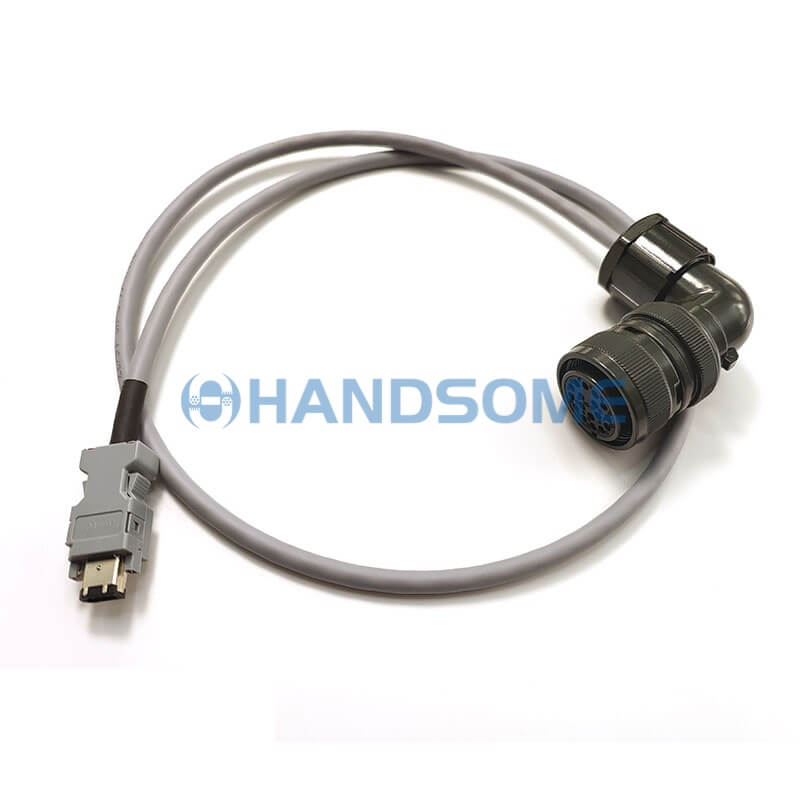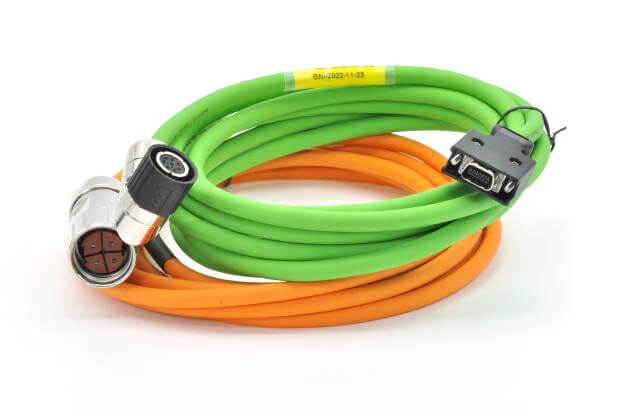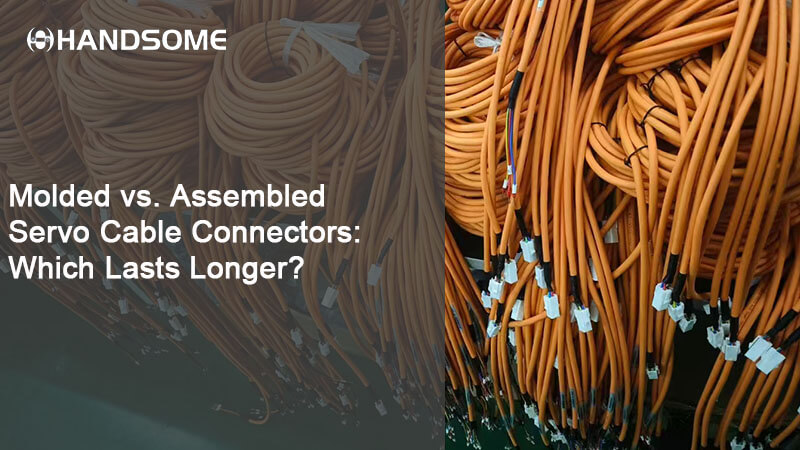Table of Contents
In the world of industrial automation, robotics, and high-precision machinery, servo cables and their connectors play a critical role.
They ensure power and data are transferred reliably, keeping your systems running smoothly. But when it comes to choosing between molded and assembled servo cable connectors, there’s one burning question on everyone’s mind: Which one lasts longer?
As an engineer who has spent years sourcing and working with electronic and industrial components, I can tell you that there’s no one-size-fits-all answer.
Each type of connector has its strengths and weaknesses, and the best choice depends on the specific demands of your application.
To help guide your decision, I’ll break down the differences between molded and assembled servo cable connectors, and share insights from my own experience on where each shines.

What Are Servo Cable Connectors?
Before diving into the differences, let’s first define what we’re talking about.
A servo cable connector is the interface between a servo motor (or similar automation equipment) and the control system.
These connectors are responsible for ensuring reliable electrical connections, particularly in high-demand environments like manufacturing plants, robotics, and CNC machinery.
The reliability of these connectors is crucial, as failure could result in significant downtime or, worse, damage to expensive equipment.
There are two main types of connectors you’ll encounter in this field: molded and assembled. Let’s take a closer look at each.
Molded Servo Cable Connectors: Durability and Reliability
What Are Molded Servo Cable Connectors?
Molded connectors are exactly what the name suggests: the cables are molded into the connector housing, creating a seamless, integrated design.
The molding process involves injecting plastic or rubber around the connector, creating a tight, uniform seal.
This construction method is designed for maximum durability, ensuring that the connector can withstand harsh conditions.
I remember working on a project with a robotics company a few years ago.
They were dealing with severe environmental factors—lots of dust, moisture, and vibration in their factory.
The team had been facing frequent connector failures using assembled connectors, leading to downtime and costly repairs.
After switching to molded connectors, the failures dropped significantly, and their machines operated much more reliably. The improved durability was like night and day.
Benefits of Molded Connectors
High Durability: Molded connectors are typically more resistant to environmental elements like moisture, dust, and chemicals, thanks to their sealed construction. If you’re operating in a harsh environment (think wet, dusty, or chemical-heavy conditions), molded connectors are an excellent choice.
Mechanical Strength: The molding process creates a robust connector, reducing the risk of mechanical stress and wear. I’ve seen clients working in industries with high-vibration machinery (like CNC machines) benefit greatly from this added strength.
Minimal Wear and Tear: Since the cable is molded directly into the connector, there are fewer points of strain. In applications where constant movement or heavy-duty stress is involved, this can significantly extend the connector’s lifespan.
Better Resistance to Fatigue: If you’re working with systems that need to maintain constant operation over long periods, molded connectors tend to have better resistance to fatigue, leading to a longer operational life.
Drawbacks of Molded Connectors
Less Flexibility: Molded connectors come pre-assembled and can’t be easily customized or modified. For companies that frequently need to reconfigure systems or modify cable types, this might be a limiting factor.
Harder to Repair: If a molded connector gets damaged, it can’t be easily repaired. You’ll need to replace the entire unit, which could be costly and time-consuming.
Higher Initial Cost: While molded connectors provide superior durability, they tend to be more expensive upfront compared to assembled connectors.
Assembled Servo Cable Connectors: Flexibility and Cost-Effectiveness
What Are Assembled Servo Cable Connectors?
Assembled connectors, as the name implies, are created by assembling individual components like pins, sockets, shells, and backshells.
These connectors are generally less integrated than molded ones, allowing for more flexibility in their design.
Many manufacturers will use assembled connectors when they need to customize the connection to fit specific needs.
When I was sourcing components for an industrial client a few years ago, they needed to frequently change out components due to evolving machinery requirements.
Assembled connectors were the perfect solution—they could easily swap out parts without the need for a complete overhaul of the entire system.
Benefits of Assembled Connectors
Customization: Assembled connectors are much easier to customize. You can select the specific contacts, housings, and backshells needed for your application, allowing for a tailored solution.
Cost-Effective: Assembled connectors are often less expensive to produce than molded ones, especially for low-volume orders. This makes them a good choice for companies looking to minimize their upfront investment.
Easier Repair and Maintenance: If one part of an assembled connector fails, it’s easy to replace just that component. For businesses with tight budgets or those operating on maintenance cycles, this can save both time and money in the long run.
Faster Turnaround: Assembled connectors can be assembled quickly and easily, making them a good choice when you need to get products to market fast.
Drawbacks of Assembled Connectors
Lower Durability: While assembled connectors are versatile, they tend to be less durable than molded connectors. The multiple parts and potential gaps between components can create vulnerabilities, especially in harsh environments.
Risk of Failure Due to Mechanical Stress: Over time, the mechanical stress on an assembled connector can lead to issues like poor contact, loose connections, or even failure.
More Maintenance Required: Because assembled connectors have more parts, they can be more prone to wear and require more frequent maintenance.
Molded vs. Assembled: Durability Comparison
Now let’s take a closer look at the longevity of both connector types based on several factors:
| Factor | Molded Connectors | Assembled Connectors |
|---|---|---|
| Mechanical Stress | High resistance to strain and vibration | Can experience contact wear and failure over time |
| Environmental Resistance | Excellent resistance to moisture, dust, and chemicals | More susceptible to environmental damage without sealing |
| Repairability | Hard to repair; requires replacement | Can be repaired by replacing individual parts |
| Flexibility | Low flexibility; fixed design | High flexibility for customization and adjustments |
| Cost | Higher upfront cost | Lower upfront cost and better for low volumes |

Which One Lasts Longer?
Molded connectors typically last longer in harsh environments due to their superior durability, better resistance to mechanical stress, and their sealed construction that prevents environmental damage.
However, this doesn’t mean that assembled connectors don’t have their place—they can be ideal for applications where frequent reconfiguration is necessary, or in situations where you need a more budget-friendly option.
From my experience, it all comes down to your application. If you’re working in a high-vibration environment or a place with exposure to moisture, chemicals, or dust, molded connectors are likely your best bet for long-term durability.
However, for operations that require flexibility or lower costs, assembled connectors might be the better option.
Conclusion: Choosing the Right Connector for Your Application
In the end, the right choice between molded and assembled servo cable connectors depends on the specific demands of your project.
Do you need something that can withstand extreme environmental conditions and mechanical stress?
Opt for molded connectors. Do you need flexibility, ease of repair, and a more cost-effective solution? Assembled connectors are the way to go.
Remember, while molded connectors tend to last longer in most harsh conditions, the longevity of any connector is influenced by proper installation, maintenance, and the specific requirements of the system.
If you need help deciding, feel free to reach out. I’ve worked with both types extensively and can guide you to the best solution for your needs.
If you’re in need of more detailed guidance or want to explore your options further, don’t hesitate to contact us or browse through our product catalog for the best servo cable connectors tailored to your industry.
